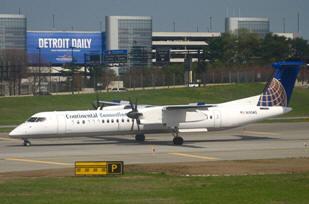|
|||||||||||||||||
|
|
|
|||
|
OIG To Audit The
FAA On Its Efforts To Enhance Airline Safety By Mike Mitchell |
||||
 |
May 22, 2011 - The Office of Inspector
General plans to conduct a follow-up review of Federal
Aviation Administration (FAA) and industry efforts to
enhance safety in response to the 2009 fatal crash of
Colgan Air flight 3407.
OIG will conduct this review at the
request of the Ranking Member of the House Committee on
Transportation and Infrastructure and the Ranking Member
of the Subcommittee on Aviation.
Several safety initiatives were introduced following the Colgan Air crash through FAA?s Call to Action on Airline Safety and Pilot Training and subsequently became requirements under the Airline Safety and FAA Extension Act of 2010. |
|||
|
Effectively implementing these requirements
in a timely manner is critical to enhancing safety for the
traveling public. Accordingly, OIG audit objectives are to
examine the FAA and industry progress in implementing elements
of the Act and identify any challenges to completing these
actions. Colgan Air Flight 3407, marketed as
Continental Connection under a codeshare agreement with
Continental Airlines, was a daily U.S. regional airline commuter
flight from Newark Liberty International Airport in New Jersey
to Buffalo Niagara International Airport in New York State. A Bombardier DHC8-402 Q400 operating as
Flight 3407 departed late from Newark on February 12, 2009, at
9:20 p.m. EST. Shortly after the last communication by the
flight crew with approach control at 10:17 p.m. (03:17, February
13 UTC), the plane stalled less than a mile northeast of the
locator outer marker while on an ILS approach to Runway 23 and
crashed into a house in the northeast Buffalo suburb of Clarence
Center, a hamlet and census-designated place in the Town of
Clarence, about 9.3 kilometres (5.0 nmi) short of the runway
threshold. A total of 50 people were killed including the two pilots, two flight attendants, 45 passengers (including one off-duty pilot), and one person in the house into which the plane crashed. It was the first fatal crash of a commercial airliner in the United States since the crash of Comair Flight 191 in August 2006 which killed 49. The National Transportation Safety Board concluded that cause of the crash was pilot error. |
||||
|
The aircraft had been cleared for the ILS Runway 23
approach to the nearby Buffalo Niagara International Airport when it
disappeared from radar. Weather conditions were a wintry mix in the
area, with light snow, fog, and winds at 17 miles per hour (15 knots). Two other aircraft reported icing conditions around
the time of the crash. The last radio transmission from the flight
occurred when the plane was 4.8 kilometres (3.0 mi) northeast of the
airport radio beacon known as KLUMP (see diagram), when First Officer
Shaw acknowledged a routine instruction to change to tower frequency. After several attempts to hail the crew, controllers
requested the assistance of Delta Air Lines Flight 1998 from Atlanta, GA
and US Airways Flight 1452 from Charlotte, NC to make visual contact
with the missing airplane; the Delta crew members responded that they
did not see the plane. During the flight and continuing through the plane's landing approach, the crew had been flying on autopilot. The de-icing system was turned on 11 minutes into the flight by the crew, who had discussed significant ice buildup on the aircraft's wings and windscreen shortly before the crash. Following this, the pilots extended the aircraft's
flaps and landing gear for landing. According to the NTSB's official
report, after the landing gear and flaps had been extended, the flight
data recorder (FDR) indicated that the airspeed had decayed to 145 knots
(269 km/h). The captain, who was the pilot
flying, then called for the flaps to be set at the 15 degree position.
As the flaps transitioned past the 10 degree mark, the FDR indicated
that the airspeed had further slowed to 135 knots (250 km/h). Six
seconds later, the aircraft's
stick shaker, a device intended
to provide aural and tactile awareness of a low speed condition,
sounded. At this time the cockpit voice recorder (CVR) recorded the
autopilot disengaging. The FDR now indicated that the aircraft's speed was
a dangerously slow 131 knots (243 km/h). Unfortunately, instead of
following the established stall recovery procedure of adding full power
and lowering the nose to prevent the stall, the captain only added about
75% power and continued applying nose-up inputs. As the aircraft came
even closer to stalling the stick pusher activated. The stick pusher is designed as a last ditch effort to lower the airplane's attitude to fly out of the stall. The captain overrode the pusher and continued pulling on the control yoke resulting in the upset and subsequent loss of control. |
|
|
| ?AvStop
Online Magazine
Contact
Us
Return To News
|
|

